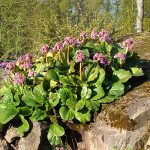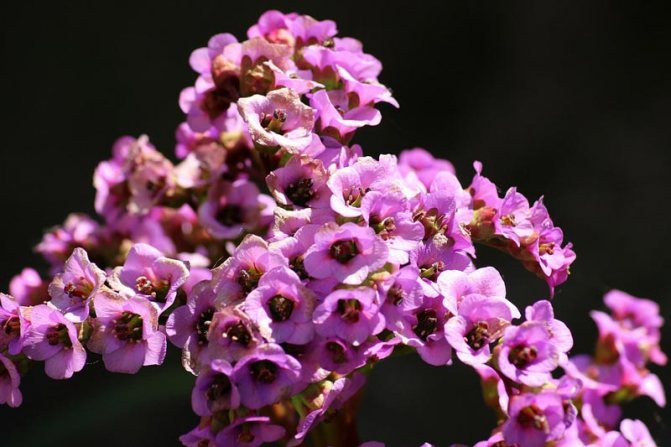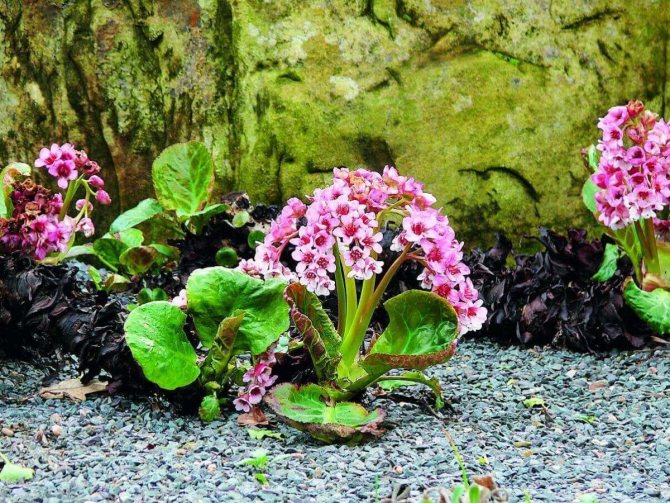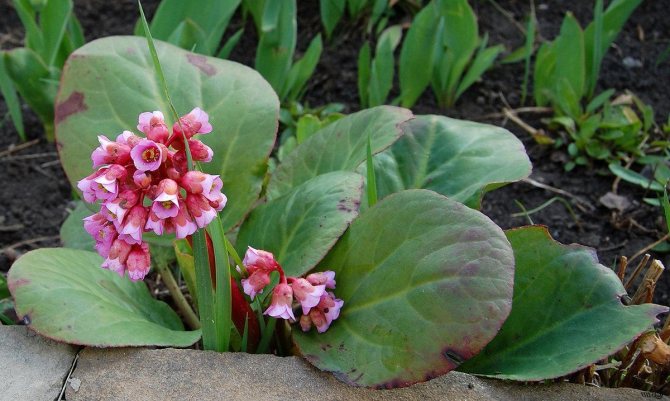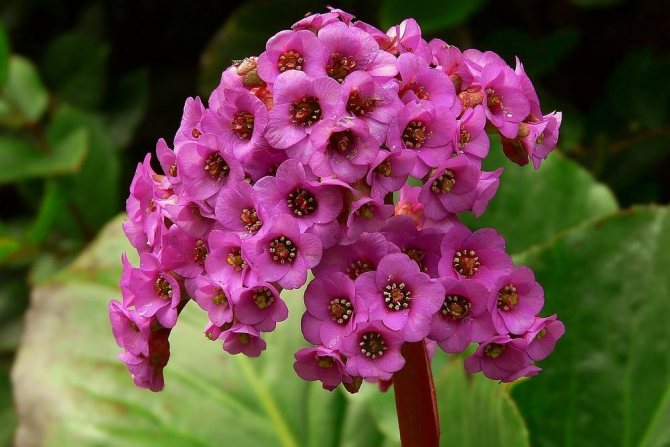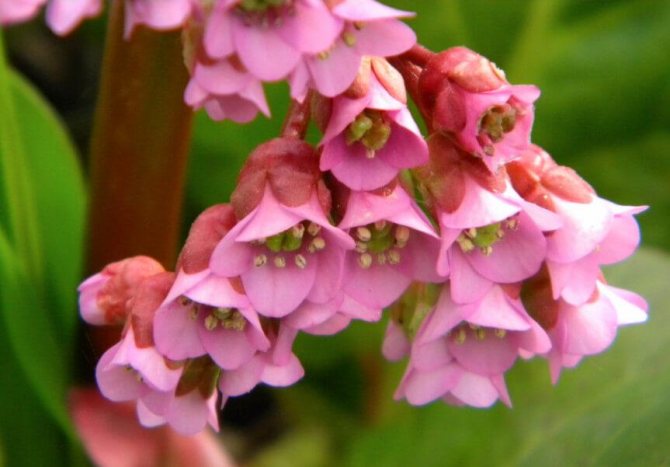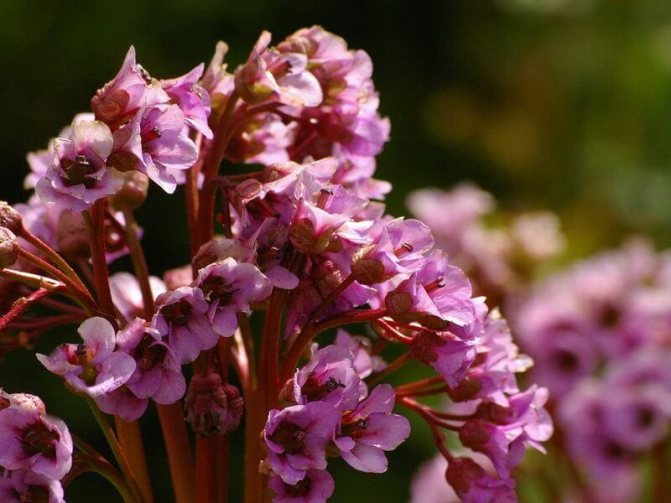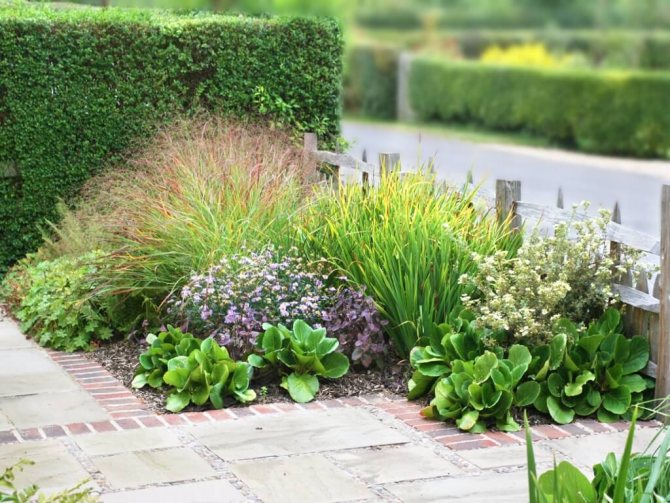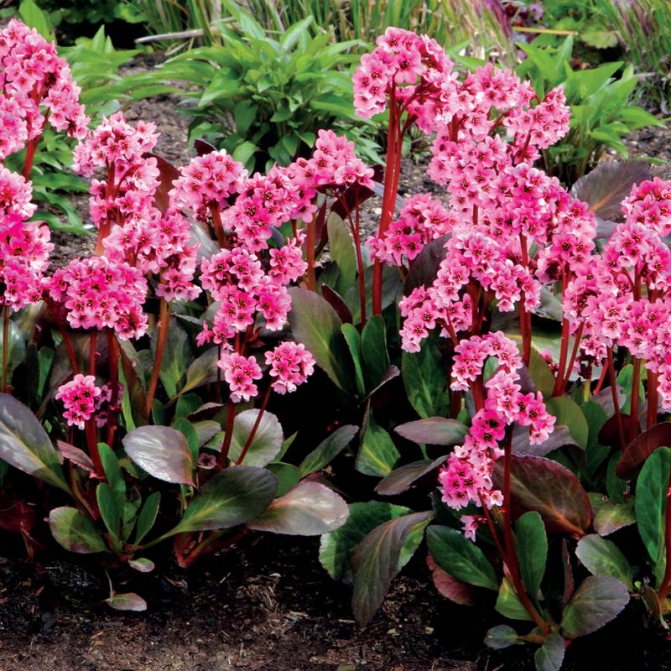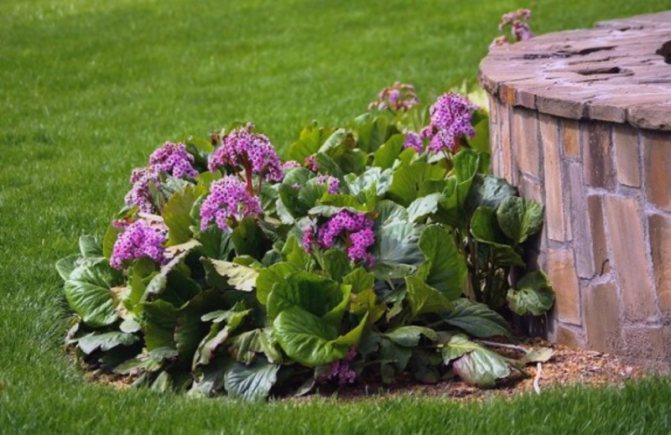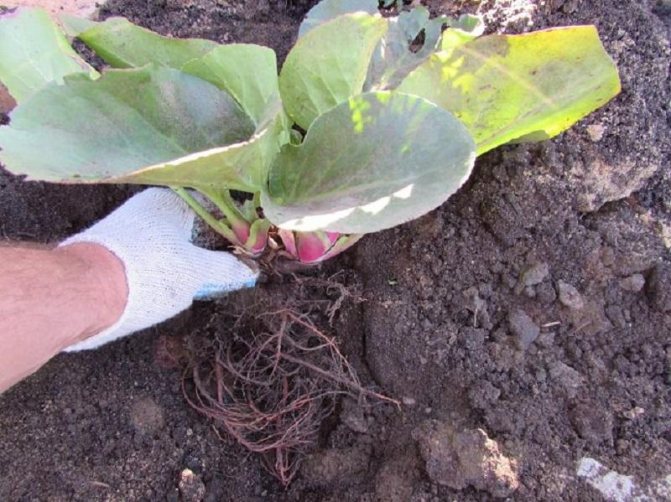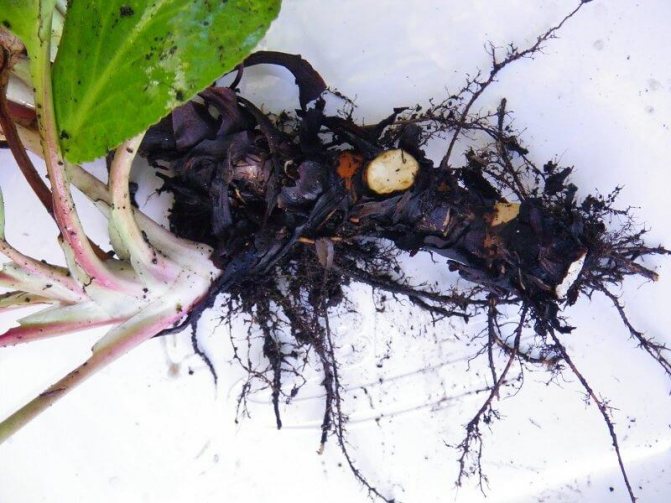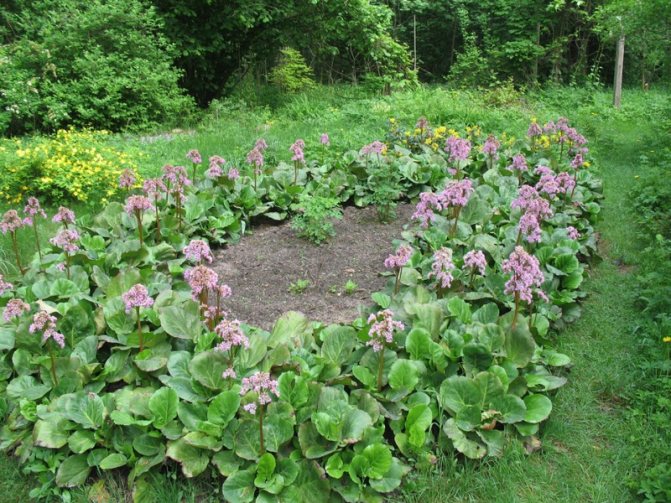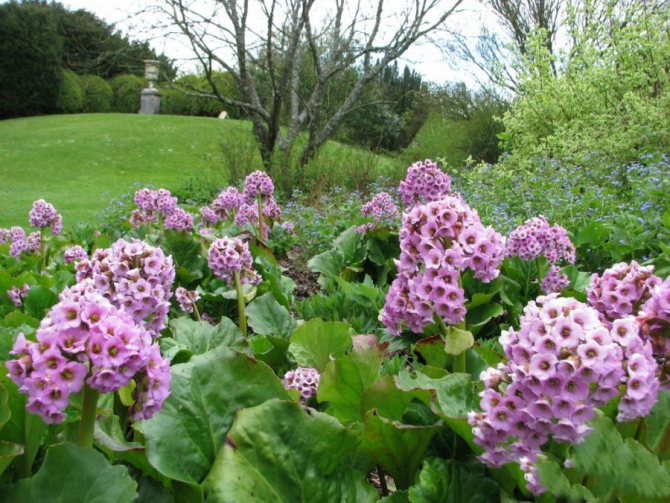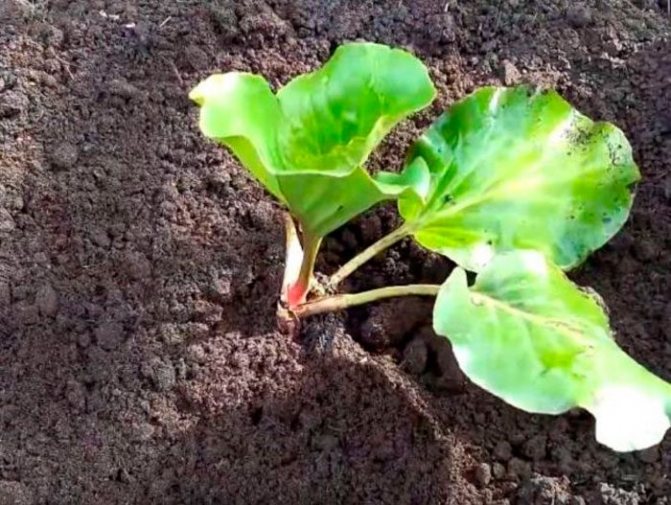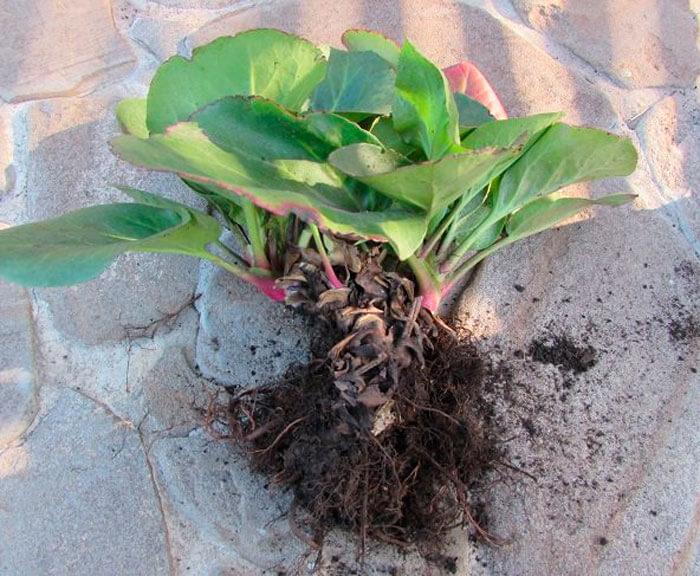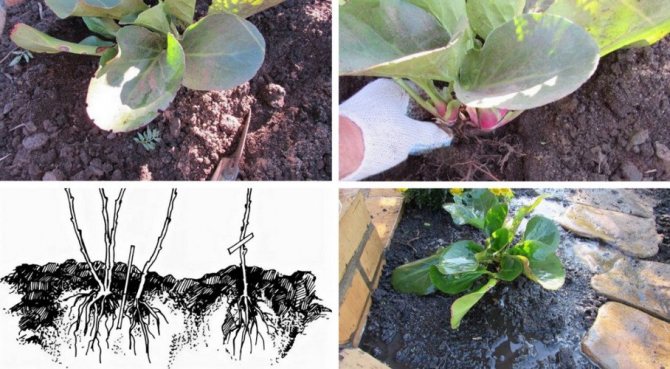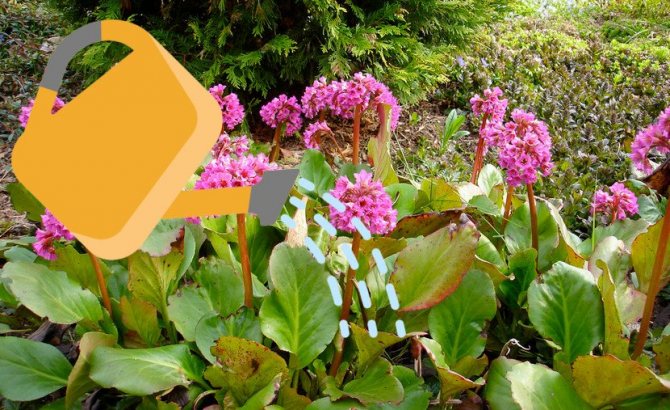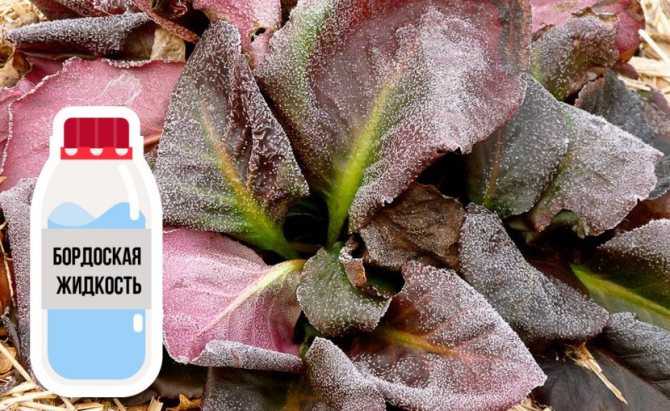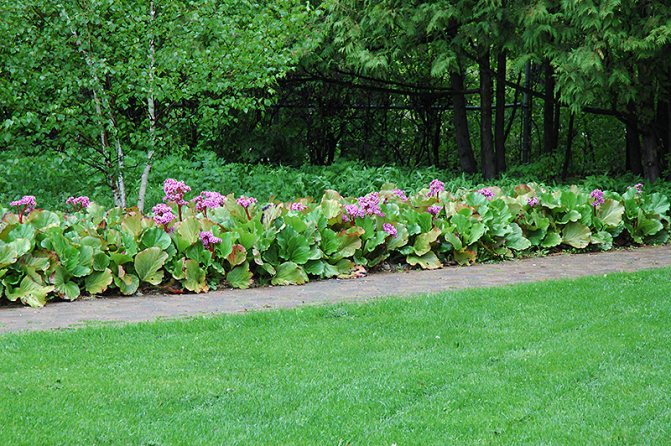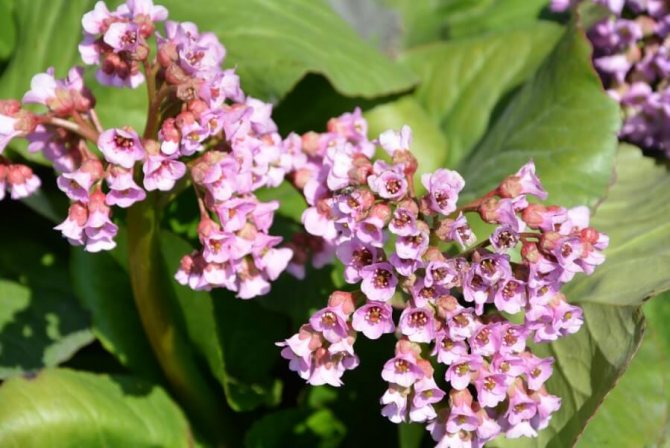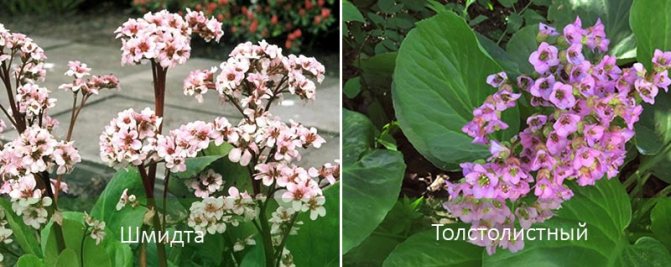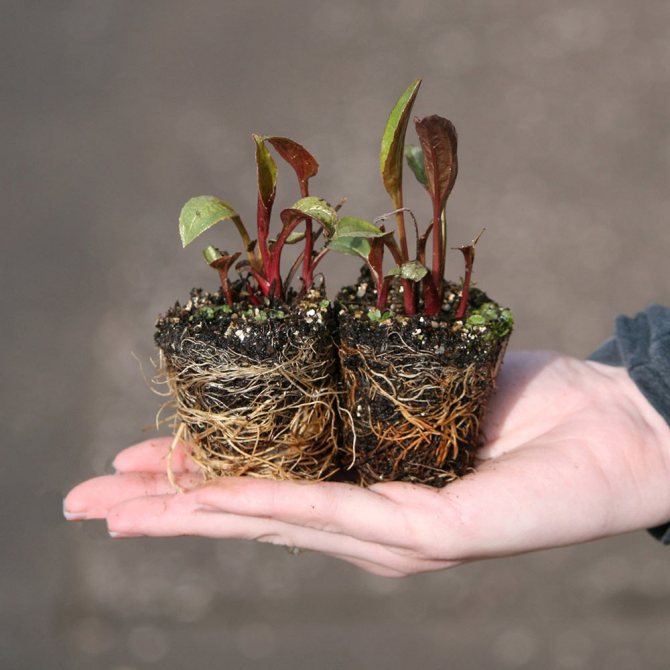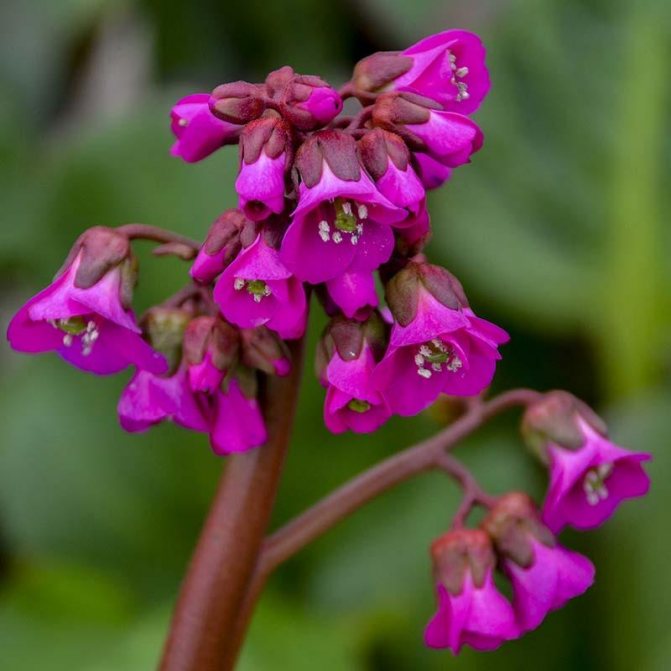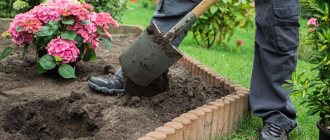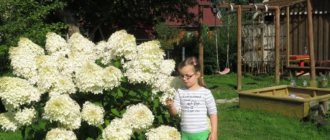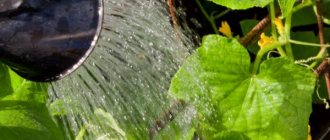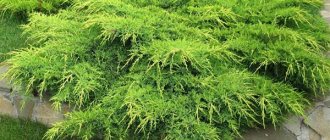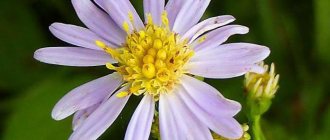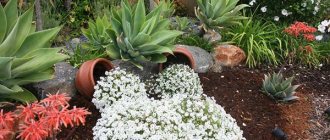In a spring flower bed, one cannot fail to notice large rosettes of juicy green foliage, with bright pink inflorescences on dense erect peduncles. This is an incense, planting and care in the open field for which will not cause trouble even for a beginner grower. But the garden, thanks to the unpretentious, catchy and very useful plant, will truly transform.
Perennial garden varieties of badan come from those parts of Asia where other representatives of the green world would not be too comfortable. Plants settle not only in alpine meadows and lowlands, but also on rocky ledges, highlands. Such conditions "hardened" the flower, often called saxifrage for its endurance.
In landscape design, as in the photo, badan found its place on alpine slides and near water bodies, in group plantings with other decorative perennials. Monoplanting of this rapidly growing and forming picturesque clumps of dense foliage of culture is quite common.
Growing badan and caring for it on the site will not make it difficult for an eternally busy summer resident. The main thing is to find a suitable place for the perennial and create conditions for growth and flowering.
Description of the plant
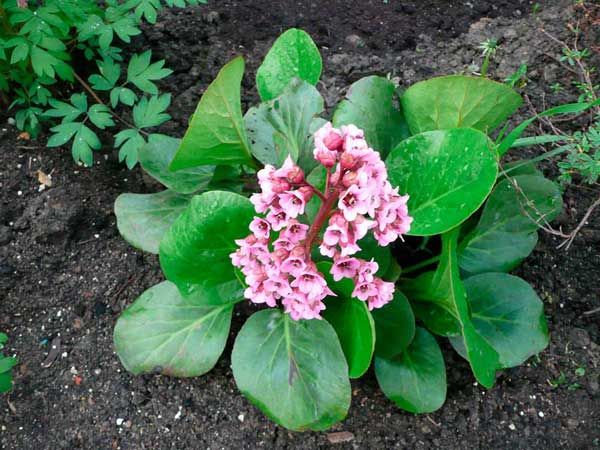
Badan is a flower culture with large leathery leaves of various shapes and sizes. An interesting feature of them is the ability to radically change color when temperatures drop. The plant belongs to evergreens, therefore, decorative plantings are guaranteed throughout the garden season. Badan overwinters in Russian latitudes without additional shelter under a layer of leaves or mulch, even in snowless winters. It is only when growing varieties with early flowering that it is recommended to protect peduncles during recurrent frosts.
Badan is a culture that combines all the characteristics that an ideal flower culture should have:
- decorativeness throughout the season, due to a beautiful long flowering (more than a month) and huge leaves that change color;
- winter hardiness;
- drought resistance;
- shade tolerance;
- unpretentious care.
Types and varieties of badan with a photo
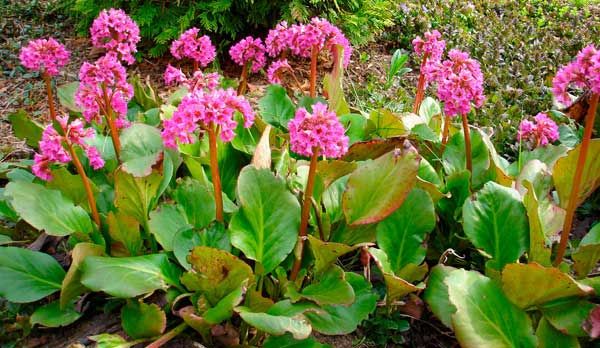

The most common in Russian latitudes are the following types of badan:
Thick-leaved (Bergenia crassifolia)
The height of an adult bush does not exceed 45 cm, its width is about the same. Serrated leaves can be either elongated or broadly oval, up to 30 cm in size. Usually they are colored green, but with sudden temperature changes they acquire a red-violet hue, which is very attractive for flower growers. Small flowers about 1 cm in diameter most often have a pink color of various shades. The peduncle is straight and reaches 50 cm in height. Blossoming of big-leaved bergenia begins early, at the end of April, and lasts for a month.
Heart-leaved (Bergenia cordifolia)
This species is larger than the previous one: a bush up to 60 cm high and up to 75 cm wide is formed here. Leaves with wavy edges are dark green and heart-shaped (hence the name). The flowers themselves are also larger than those of thick-leaved bergenia, and their color is deeper, darker shades of pink.
Hybrid varieties bred by breeders to expand the range of badans are very popular in decorating plots. The most interesting varieties with descriptions are presented below.
"Magic Giant"
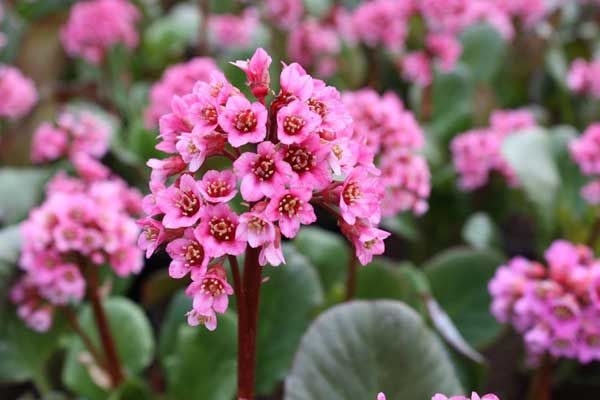

Variety "Magic Giant"
Flowering occurs in May-June. The flowers are light pink, bell-shaped. The leaves are large, rounded, painted in green-purple color. The bush grows 1 m wide and reaches half a meter in height.
Bressingham White
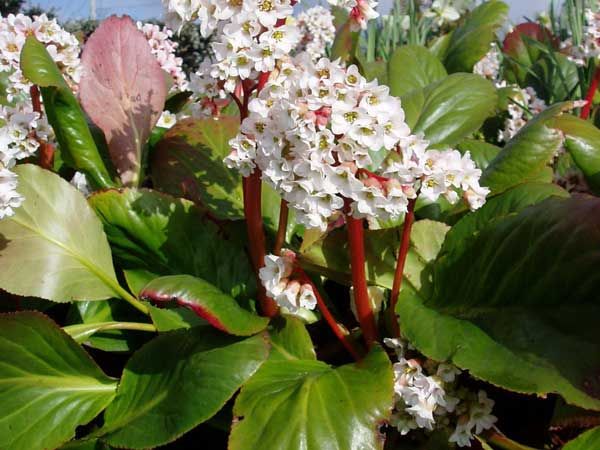

Variety "Bressingham White"
It blooms early - in April-May. The main color of the flowers is white, however, there is a slight pink tint. The variety grows 50 cm wide and 30 cm high. Leaves change color from dark green to purple during the season.
"Sakura"
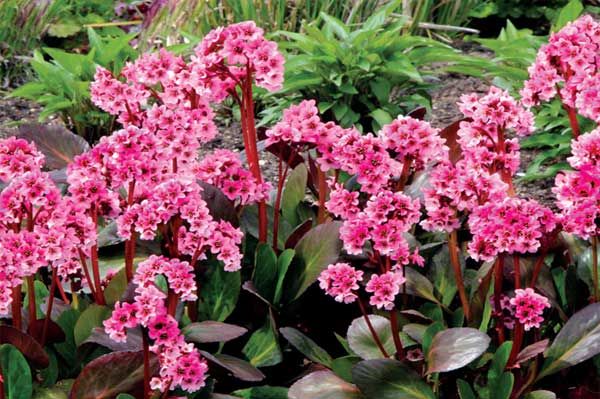

Variety "Sakura"
Flowering is very decorative and unusual for badan - the flowers have a semi-double shape and a delicate pink tint and resemble Japanese cherry blossom flowers. The height of the peduncles is 40 cm, and the bush itself is 30 cm. The leaves of the berry of this variety darken strongly in cold weather and become purple-black.
Planting badan on the site
Seat selection and preparation
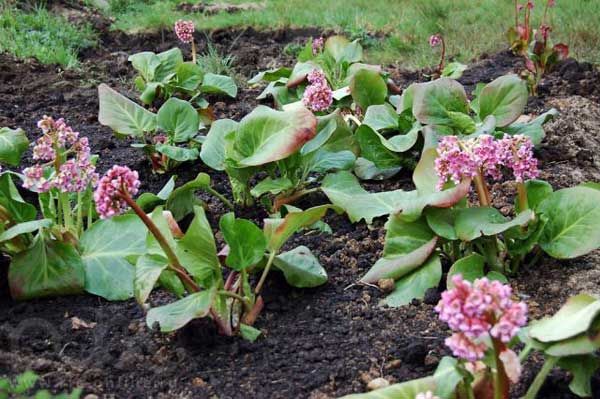

The best place to plant badan is considered to be partial shade. But it takes root and grows both in sunny areas and in the shade. But in the sun this flower develops much more slowly, and strong shading negatively affects the decorative effect of its flowering.
It is not recommended to plant badan in the lowlands, since the roots will rot during stagnant water, but small hills for planting are just perfect.
Since the roots of badan lie close to the surface of the earth, the fertile soil layer can be only 25 ... 30 cm. It is not picky about the composition of the soil, but it is much more difficult for it to grow and develop on heavy soils, so the soil is often loosened by adding sand. The acidity of the soil should be close to neutral, planting on slightly acidic soils is allowed.
Preparing for landing
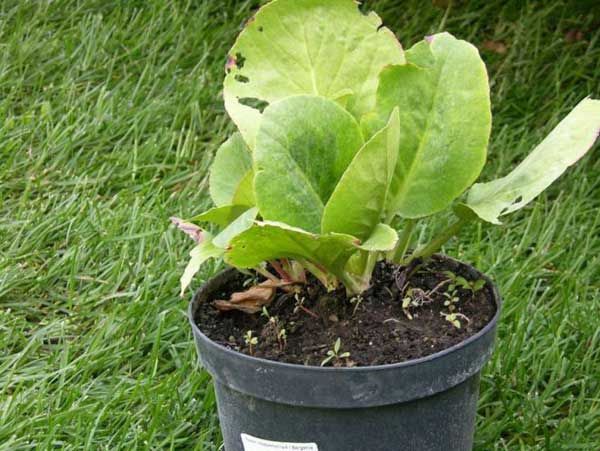

In principle, the seeds and seedlings of badan do not need any additional preparations before planting; as a prevention of the appearance of fungal diseases, they can be pretreated in a fungicide solution. Seedlings (cuttings or cuttings) with a weak root system can be soaked in special preparations to stimulate its growth, while removing all rotten and dead roots.
Sowing badan seeds
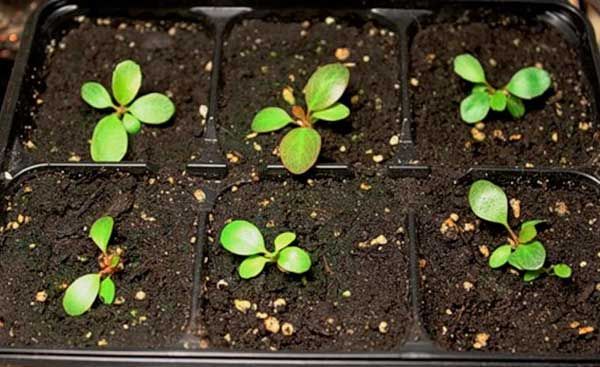

If the material is personally collected in October from the already existing badans, then the seeds are sown in planting boxes and simply left for the winter on an area under the snow, and in March-April they are brought into a heated room with an air temperature of about + 200C. If the seeds were purchased in winter, then they are planted in boxes in March in the snow (since the seeds are quite small).
The substrate in the box should be loose and breathable. After planting, the seeds are sprinkled with a small amount of sand. The soil in the boxes should be kept moist before and after the emergence of shoots, but at the same time, an excess of moisture should not be allowed.
Planting badan seedlings in a permanent place
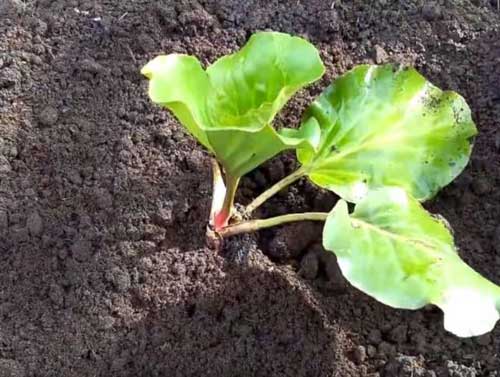

Planting in the ground in a permanent place of badan when growing from seeds usually occurs in June, when the seedlings reach a height of 10 ... 15 cm. Immediately before planting, it is advisable to add ash, humus and complex mineral fertilizer to the holes, and then stir with a spatula. The holes are positioned so that the distance between adjacent berry seedlings is at least 30 cm.
If the purchased seedlings are rooted in the substrate, then they can be planted throughout the season according to the scheme 35 ... 40x35 ... 40 cm.
If a badan root was purchased, then it is planted in a permanent place, having previously soaked in water and treated in a fungicide solution.When buying such planting material, it is important to pay attention to dormant buds (there should be at least 5 of them), as well as to the general condition of the root: if there are traces of rot, or it looks dried up, then it is better to refuse such a purchase.
Planting badan: video
general characteristics
Badan is a separate genus of the saxifrage family, which includes 10 species. Since Siberia and Altai are the birthplace of culture, the flower is naturally endowed with high resistance to low temperatures, therefore it can be successfully cultivated in different climates.
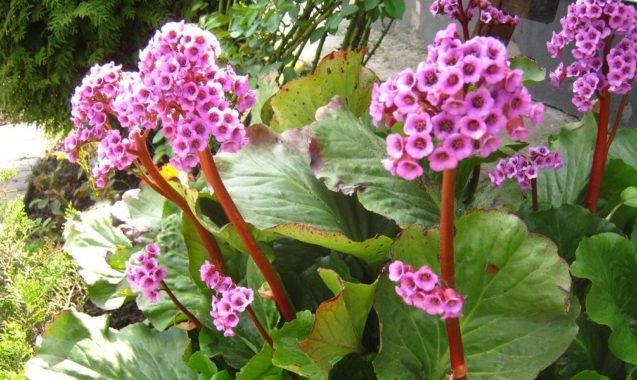

In nature, bergenia chooses wet areas for itself on slopes or in river valleys, in forests and in dense plantings, where you can find enough dampness and where the sun's rays do not penetrate well. The flower is especially noticeable in early spring after the snow cover melts and from under it you can see powerful large leaves that have wintered under the snow. Because of the characteristic shape of the leaves, badan is popularly called "elephant ears". The foliage is collected in root rosettes, which form neat clumps during the first year.
With warming, the first peduncles appear on the bergenia, rising high above the outlet. The flowering of this plant is impressive. On a flowering shoot up to 50 cm high, a large number of small inflorescences of white, cream, scarlet, pink or lilac color are revealed. Up to 120 buds can develop on one flowering shoot, which will gradually open.
After a long flowering, the fruit-boxes ripen, in which there is a large number of seeds. After that, by the fall, the foliage begins to acquire a red or brown hue, this color will persist throughout the winter. In some years, flowering can occur again in the fall, if weather conditions are favorable for this.
A culture can grow in one place for many years, sometimes even decades, without requiring a transplant and without losing its decorative effect.
Badan care
Watering
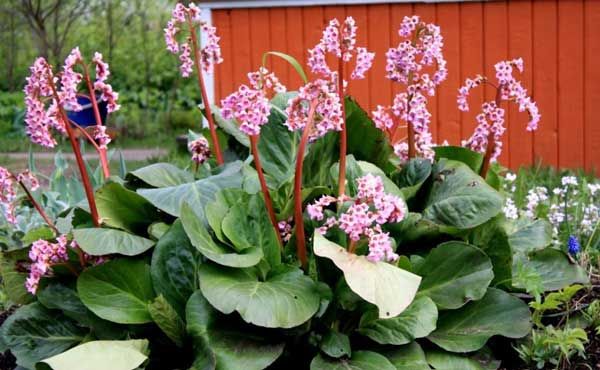

Watering should be moderate. Badan belongs to drought-resistant plants and does not need to be watered too often, and excess moisture threatens with root decay.
Watering in the case of berry care depends mainly on weather conditions (it is clear that in stable hot weather, the soil will have to be moistened more often) and on growing conditions: for example, when using mulch around plantings, they will withstand up to 1.5 weeks without water.
Top dressing
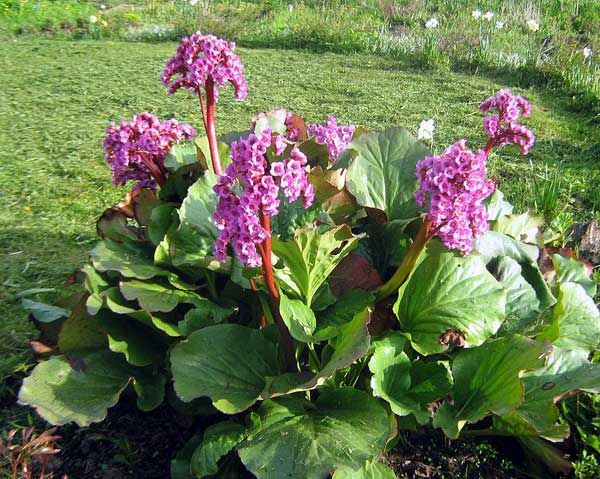

Top dressing should not be frequent, since their excessive introduction will negatively affect the flowering of the culture. It is enough just to apply in early spring a complex mineral fertilizer in bulk under the bushes, and with watering it will gradually penetrate into the ground. The second feeding is carried out after the blooming of bergenia.
Weeding
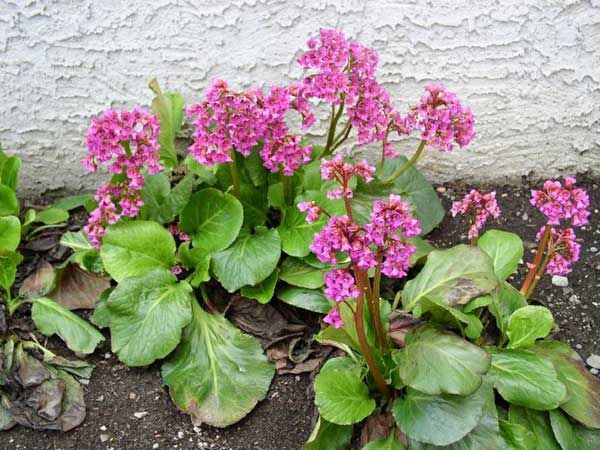

Loosening and removal of weeds must be timely, especially if the berry is grown without mulching the land around the plantings. Loosening must be done carefully, since the roots of the plant are close to the surface. Weeds are removed as the berry grows, and with the active growth of the bush, it independently displaces all "neighbors".
Mulching
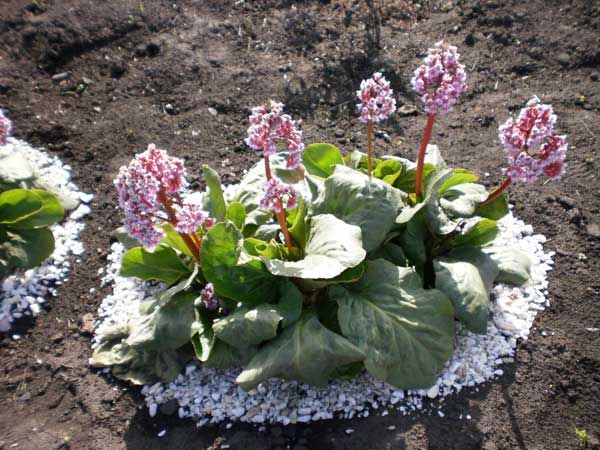

Mulching when growing bergenia is recommended. Under natural growing conditions, the role of mulch is played by old berry leaves, but in the garden it will not look very beautiful from the point of view of aesthetics.
Natural materials can be used as a mulching material: sawdust, bark, peat or humus from leaves. Mulch is laid in a layer of 1.5 ... 2 cm, and, if necessary, sprinkle it.
Growing badan: video
Application recipes
Rhizome extract prepared from 3 tablespoons of crushed raw materials and a glass of water.The liquid is evaporated by half on the fire, filtered and taken 20-30 drops 3 times a day for the diseases listed above. For douching, use a diluted extract at the rate of 1 tablespoon per glass of water. In a similar dilution, the extract is used for rinsing with stomatitis, gingivitis, sore throat, periodontal disease.
You can use and decoction, which is prepared from one tablespoon of crushed rhizomes and 1 glass of water. Raw materials are boiled for 30 minutes over low heat in an enamel bowl, cooled at room temperature, filtered and taken 1 tablespoon 3 times a day before meals.
In folk medicine rhizome powder used to clean teeth with gum disease. To heal cracks on the arms, legs, lips, they prepared ointment... To do this, 5 g of rhizomes crushed into powder are boiled in a glass of butter for 5-10 minutes. Store the ointment in the refrigerator.
Propagation of badan
This flower crop can be propagated in three ways.
By dividing the bush
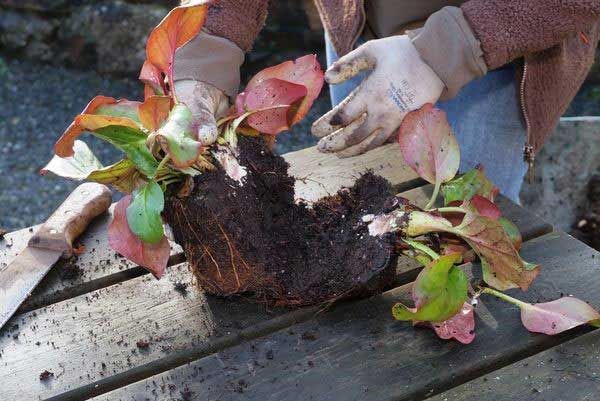

Division is carried out in early spring or late summer. The resulting delenki are planted immediately in the open ground according to the 35x35 cm scheme, you can first cut the side roots to stimulate their growth. This method of reproduction is very convenient, but you can divide the bushes only at the age of at least five years.
By cuttings


This method is best done after the blooming berry. As a cutting, a segment of rhizome with an apical bud is most suitable, while all massive leaves must be removed from it and 2 ... 3 young ones should be left.
Cuttings are planted directly into the open ground, keeping a distance of 35 cm between them. You can pre-soak them in a solution of a root formation stimulator (for example, in Kornevin or Kornesila). Before the onset of winter, the newly-baked seedlings have time to take root. Badan, propagated in this way, will bloom in 2 years.
Seeds
This method is considered to be longer in terms of waiting for flowering - the berry from seeds will bloom only at 4 years of age. The rules for sowing berry seeds by seeds were described above.
Application in traditional medicine
Badan is used not only for the treatment of diseases. Cosmetologists advise to prepare lotions from a medicinal plant and use them to treat oily skin, acne, seborrheic dermatitis, and to narrow pores.
In gynecology, it has found wide application for the treatment of erosion. The plant relieves stress, therefore it is considered an indispensable tool for preventing the development of malignant tumors.
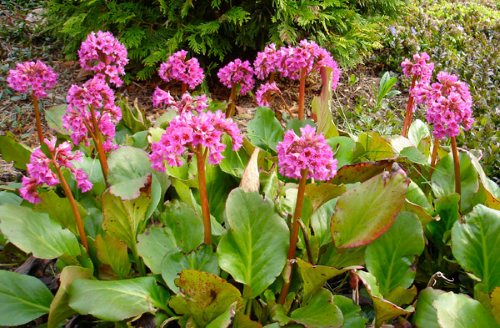

Heart-leaved incense
As a result of experiments, it was found that decoctions and infusions based on bergenia have a hemostatic, anti-inflammatory and astringent effect, therefore they are recommended to be used to strengthen the walls of capillaries. Badan tincture lowers blood pressure, constricts blood vessels, has antimicrobial and diuretic properties.
Badan flowers are an excellent analogue of bearberry. Due to the fact that the funds based on it stop bleeding, fight microorganisms and quickly heal wounds, it is actively used in the treatment of lung diseases, gastrointestinal diseases, whooping cough, flu, respiratory infections, and is used for skin rashes.
A good remedy for headaches, migraines, gastritis, articular rheumatism. It is used to treat hemorrhoids, stop uterine bleeding, get rid of bleeding gums.
Diseases and pests
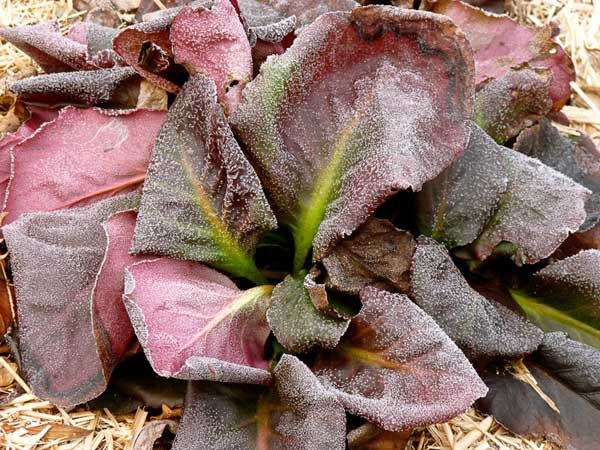

Badan is resistant to pest damage, since because of its chemical composition, few people want to feast on them. The main problem in its cultivation can be represented only by nematodes living in the soil, and a drooling penny, for the reproduction of which shady planting conditions are favorable. It is recommended to fight such pests with the use of chemical preparations, therefore, processed bergenia is categorically not recommended to be consumed for food and for medicinal purposes.
If the berry is suddenly attacked by slugs or snails, then you need to take care of collecting old leaves from the bushes, and collect the pests by hand.
Also, this culture can be affected by fungal diseases, in cases of acquiring already infected seedlings or if the rules of agricultural technology are not followed.
Growing and care problems
Why the plant does not give inflorescences
Badan bloom is delayed under the following conditions:
- The plant is young. The main reason why badan does not bloom is growing from seeds, the chosen breeding method is accompanied by late flowering: in the third or fourth year after sowing, it is worth waiting a little.
- The flowers are densely planted. It is advisable to plant bergenia.
- The culture has recently or often been transplanted - an additional reason why berry bushes do not bloom. What to do? Wait until the plant adapts to a new place, provide complex fertilizing with minerals.
- Not enough light. A similar situation is possible if the bushes are shaded with old trees with wide crowns.
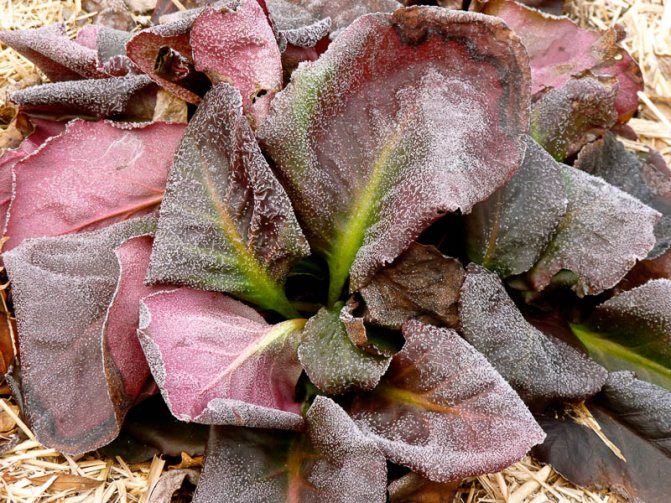

The plant does not bloom
Badan does not give color when affected by a fungus. Growing a flower in swampy areas, constant moisture ends with diseases that affect the leaves and peduncles.
Leaves curl
The cause of leaf deformation is more often gaps in the care:
- if you plant it incorrectly;
- ensure nutritional deficiencies;
- lack of moisture;
- sudden changes in temperature;
- do not prevent the attack of pests;
- diseases.
Determination of the problem begins with a close examination of the shoots and leaves, analysis of weather conditions, and care actions.
Pest and disease control
The peculiarities of the chemical composition allow the badan to easily cope with the attack of pests. However, in clay soil or with poor drainage, the rhizome is prone to rotting. A crop grown in the shade is attacked by a slobbery penny. Also, perennials are attacked by nematodes, the fight against earthworms will not be difficult if the rhizomes are treated with a manganese solution. Then you will need to transplant to a new location. Areas attacked by nematodes are disinfected with chemicals.
Berry care after flowering
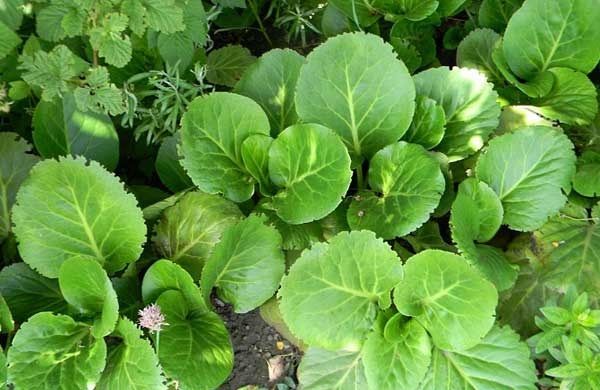

It consists in removing faded arrows and dried leaves. In this case, it is advisable not to leave hemp, but to carry out the cutting by hand without a secateurs or a knife. If the leaves are used for medicinal purposes, then they are left to winter on the bush, and in the spring they are harvested and dried.
After flowering, the berry is fed with the introduction of a loose complex mineral fertilizer.
Badan in landscape design


This flower culture has a very wide application in gardening a garden plot: it looks harmoniously as a tapeworm when planting, for example, in a lawn, on alpine slides, in group compositions, as well as as a decoration for borders and along the edges of paths.
Growing various varieties of badan helps the gardener-florist to bring to life the most interesting design ideas, but when planting, you should always take into account the ability of the badan to grow and suppress the surrounding plants.
Useful properties of badan
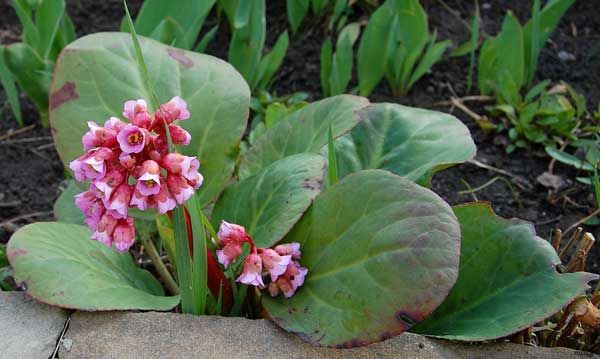

For medicinal purposes, the roots and leaves of bergenia are used, since they have a special chemical composition and contain a large amount of useful elements. In this regard, badan has antibacterial, hemostatic, anti-inflammatory effects on the human body.
Planting badan in the garden will not only decorate the site, but also add a useful medicinal plant to you. It is attractive for its unpretentiousness, ease of care, ability to look good in composition and alone.
A source
How to care outdoors
Soil selection and preparation
Bergenia is planted in an elevated area in partial shade. In low and damp places, perennial shrubs will form flowers quite rarely, which is caused by decay of the rhizome with excess moisture.Saxifrage prefers to grow in sod soil with low neutral acidity - pH 5.5-6.5.
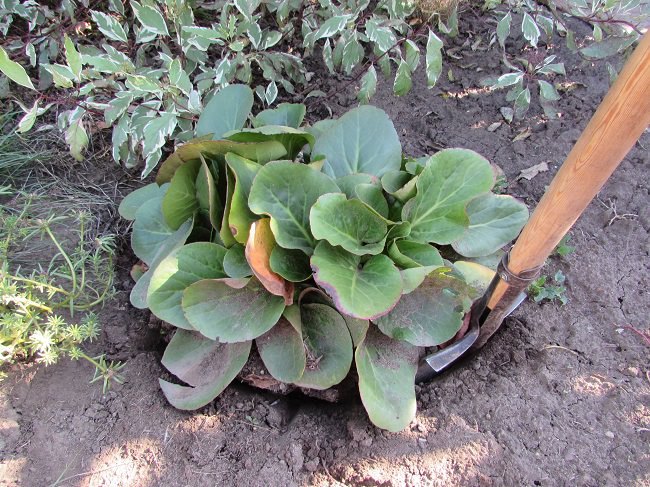

Saxifrage transplant
The soil must be well drained.
Watering rules
The first watering of the grass is carried out as the buds are formed, the second - during the flowering period, the third - on the 15-20th day of the rest period. It is recommended to moisten the soil during the dry season. If it rains regularly, there will be enough natural rainfall for the bergenia.
After landing
In spring, care when planting badan in open soil begins with breaking off spoiled leaves. Then the soil under the plant is mulched and fertilized with the universal fertilizer "Kemira Lux". It is necessary to water the perennial as needed, excluding the drying out of the soil.
In spring and autumn, during the flowering period
The healing healer is responsive to feeding during the period of bud formation. As soon as the culture blooms, it is necessary to stock up on a complex of mineral fertilizers and, after 3 weeks, provide plant nutrition. In autumn, the culture is watered with a solution of superphosphate mixture at the ratio: 20 g per bucket for irrigation of 1 m² of soil.
It's important to know! Low temperature bergenia tolerates normally. During the flowering period in spring, with severe frosts, the buds and buds freeze. Under the scorching sun, the berry turns yellow in June, what to do? To shade or replant the plant, the gardener decides on his own.
Preparation for wintering
Badan (bergenia) hibernates in open soil without shelter, but can be damaged by the wind. To prevent the leaves from drying out, the plant is watered during the cold period.

